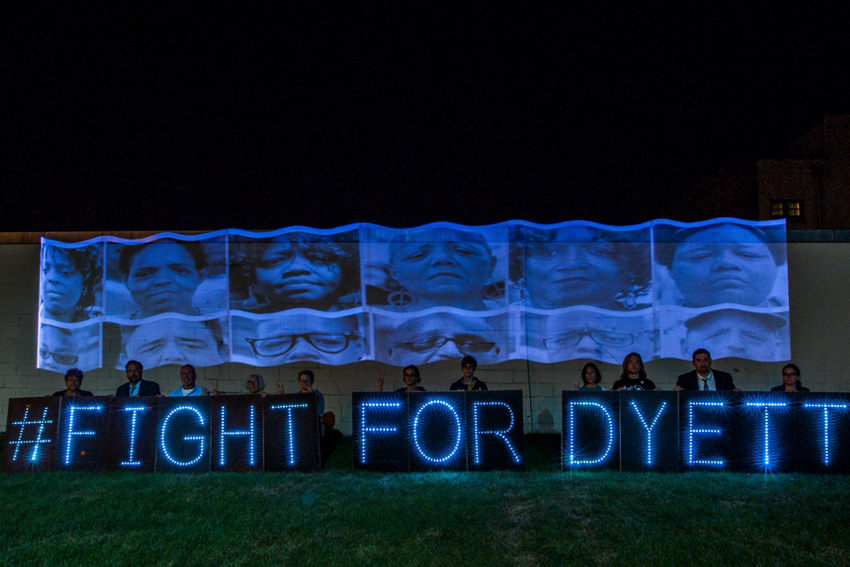The Broader Meaning of Chicago’s Dyett Hunger Strike

The website of the New Yorker magazine just published a fascinating piece by Eve Ewing, written to mark the importance of the recent 34-day hunger strike in Chicago that pressured Rahm Emanuel’s administration to preserve Dyett High School in that city’s Bronzeville neighborhood.
According to a report by WBEZ Chicago, though the hunger strikers did not achieve all of their demands, they did secure a promise that the new Dyett high school will, “have a neighborhood boundary, meaning all children in the attendance-area could attend without having to first meet minimum test-score requirements or go through a lottery (nearly all Chicago high schools opened in the past decade have had citywide boundaries and require students to apply; no one is guaranteed admission).” “(T)he roots of the fight began years ago, when CPS shook up the local schools in the Bronzeville-Kenwood-Washington Park area by turning the high school, King, into a test-in school. Dyett became the default attendance-area high school for the area…. The school board voted in 2012 to phase Dyett out; the last class graduated in June with 13 students.”
In her New Yorker piece, Ewing sets Chicago Public Schools’ closure of Dyett High School in the context of the history and impact of Chicago’s public housing—a history of public policy reinforcing neighborhood segregation in Chicago, where poverty remains concentrated decades after African Americans came north in the Great Migration to escape just such conditions. In the 1950s, “When C.H.A. (Chicago Housing Authority) officials appeared before the city council with proposals for new housing construction, white aldermen routinely slashed at the lists of prospective locations until those projects slated for black communities were all that remained. What resulted was the construction of five more (in addition to the original Ida B. Wells project) high-density housing projects, bringing the total in Bronzeville to eight thousand two hundred and thirty-three units…. In 1970, the families who lived in the Robert Taylor Homes… averaged six people each—a total of six thousand two hundred and fifty adults and twenty thousand four hundred and forty children. Children outnumbered adults by more than three to one…”
“Ida B. Wells, the Robert Taylor Homes, and other Bronzeville high-rise projects have all been torn down as part of the C.H.A.’s ‘Plan for Transformation,’ which Mayor Richard M. Daley launched in 1999… The agency declared that residents would have the right to return to the newly constructed mixed-income housing that would replace the high-rises… In 2005. Venkatesh and Isil Celimli wrote that seventy-five percent of C.H.A. residents surveyed stated a preference for returning to their old neighborhoods, but less than twenty percent would be able to do so.” The neighborhoods south of Chicago’s Loop have gentrified. Developers of The Broader Meaning of Chicago’s Dyett Hunger Strike | janresseger:
